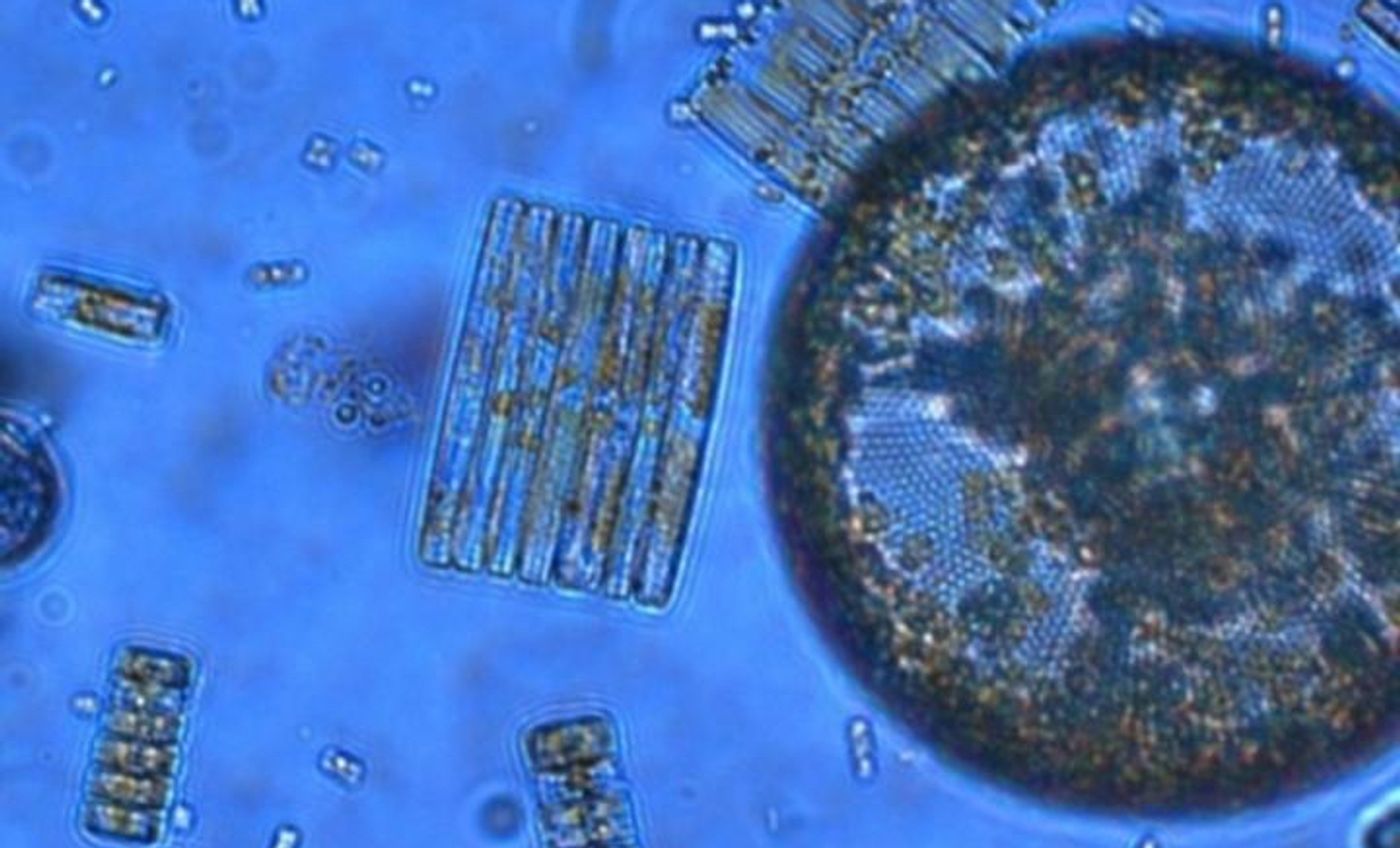Critical Biological Process is Altered by Ocean Acidification
Organisms in the ocean exist as part of an interrelated web, with phytoplankton acting in an important supporting role. These microscopic plants grow near the ocean surface, and their health is negatively impacted by excessive carbon dioxide in the atmosphere. New work by researchers at the Scripps Institution of Oceanography at the University of California San Diego and the J. Craig Venter Institute (JCVI) has shown that phytoplankton use carbonate when they obtain the iron they need. As atmospheric carbon dioxide levels rise, the ocean acidifies and carbonate is lost, which interferes with the acquisition of iron by phytoplankton. Carbonate ions are expected to be reduced by 50 percent by century’s end.
The work, reported in Nature, has shown how iron regulates phytoplankton growth. The authors have revealed a direct connection between the health of the critical base of the food chain, phytoplankton, and the impacts of ocean acidification.
"Ultimately our study reveals the possibility of a 'feedback mechanism' operating in parts of the ocean where iron already constrains the growth of phytoplankton," said the lead author of the work, Jeff McQuaid, who began this work as a graduate student at Scripps Oceanography. "In these regions, high concentrations of atmospheric carbon dioxide could decrease phytoplankton growth, restricting the ability of the ocean to absorb carbon dioxide and thus leading to ever higher concentrations of carbon dioxide accumulating in the atmosphere."
"Studies investigating the effects of high carbon dioxide on phytoplankton growth have shown mixed results to date. In some cases, certain phytoplankton seem to benefit from high carbon dioxide," added senior author Andrew E. Allen, a biologist with a joint appointment at Scripps and JCVI. "Most of these studies, however, have been conducted under high-iron conditions. Our study uncovers a widespread cellular mechanism that suggests high CO2 might be particularly problematic for phytoplankton growth in low-iron regions of the ocean."
As more carbon dioxide dissolves in the ocean, more carbonate is lost in a roughly equal proportion. Because atmospheric carbon dioxide levels are predicted to be twice as high at the end of the century, carbonate ions on the ocean’s surface will decrease by about half. This will have a profound impact on sea life and the marine food chain.
Phytoplankton need iron to survive, so it was thought that phytoplankton growth was dependent on the concentration of iron in various regions; that theory will have to be revised based on this research.
"Understanding the mechanism of iron uptake is critical to develop meaningful predictions on how phytoplankton may respond to future ocean conditions, but this understanding has been elusive," noted project collaborator Adam Kustka, a trace metal physiologist from Rutgers University.
A region of the ocean with particularly low iron levels is the Southern Ocean. DNA analysis of phytoplankton from that area revealed an iron-responsive gene.
"This gene, called ISIP2A, was one of the most abundantly transcribed genes in low-iron Southern Ocean, suggesting it had a really important role in the environment," said Allen.
The protein produced by the gene was found to be a phytotransferrin, which was only discovered through synthetic biology techniques employed by the Venter Institute. Further study showed that phytotransferrin has ancient origins.
"The appearance of phytotransferrin some 700 million years ago is consistent with a time in Earth's history marked by massive changes in ocean chemistry, and this ancient evolutionary history helps explain why no one has connected ISIP2A and transferrin," said Miroslav Oborník, a molecular evolutionary biologist from the University of South Bohemia and co-author on the paper.
It’s hypothesized that like transferrin, phytotransferrin uses a synergistic mechanism, binding both iron and carbonate at once. If carbonate ions become more scarce, phytoplankton will have a tougher time binding iron, hampering their growth.
"Since carbonate and iron have to bind simultaneously, as carbonate concentrations drop, phytotransferrin is able to 'see' less iron," said McQuaid. "The total amount of iron isn't changing - rather the ability to grab onto it changes, and this ultimately influences the growth rate."
Sources: AAAS/Eurekalert! Via University of California San Diego, Nature









